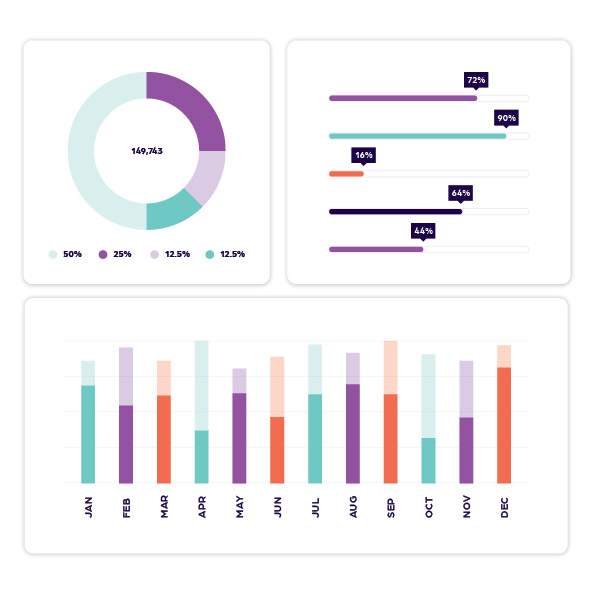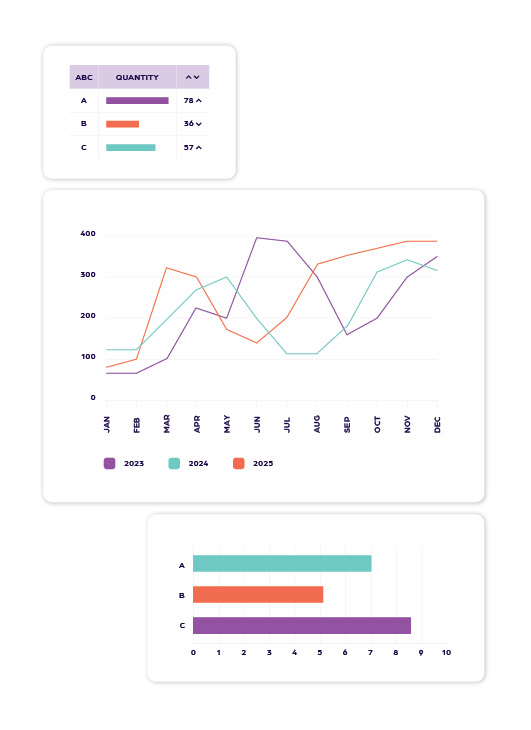Marketing in the age of data
Marketing in the age of data
How analytics shape campaigns, strategies in the industry

It’s been 40 years since David Morton (Marketing ‘82) launched JW Morton, a digital marketing agency, with business partner Jeff Westrum. He was 24 at the time, and the industry has changed significantly since. And that’s probably putting it lightly.
As Morton reflects on his four decades of work and wisdom, clear themes emerge.
The 1980s were all about traditional media — print, radio and television ads. The 1990s were defined by technology, with the prominence of personal computers and the internet. The 2000s saw the rise of social media and the introduction of digital marketing data. That only grew in the 2010s.
Now? Marketing data is everything.
“Data is pretty much part of every conversation with our clients,” Morton said. “It’s all about metrics, impressions, click-through rates, conversion rates, things like that.”
Organizations now expect real-time marketing performance tracking and measurable results, usually in the form of custom analytics dashboards showing email rates, website hits, social media numbers, video views and so much more. Some companies are heavily invested in daily metrics, while others prefer a broader overview of campaign performance.
Agencies like JW Morton tailor approaches to meet those needs, with help from a team of marketers and marketing strategists, who act almost as data analysts. Morton said that every marketer must be familiar with data, even if they are more creatively focused.
“Everybody has to know something about it,” Morton said, adding that he’s pushing all his employees, including art directors and copywriters, to go through Google Analytics certification. “Because even as an art director or a creator, you have to know about websites and how you can impact that.”
For Amy Rathmacher (Business Analytics, Marketing-Advertising Digital Media, and Interactive Digital Studies ‘24), marketing data is all she does. She works as a search engine optimization (SEO) specialist at Spinutech, a digital marketing agency. Rathmacher deals with the technical side of marketing as well as the content side, partnering with clients to improve their website layout and content based on what she sees in Google Analytics and other data dashboards.
A lot of the work isn’t just looking at data, it’s digesting the data and helping clients understand it.
“There’s not a day that goes by that I’m not looking at Google Analytics or Google Search Console,” Rathmacher said. “Data is a huge part of what we do. The big part is being able to relay that data in a way that allows clients to comprehend the story behind the why.”

Data is a huge part of what we do. The big part is being able to relay that data in a way that allows clients to comprehend the story behind the why.
Preparing students as well-rounded marketers

At the Wilson College of Business, marketing data plays a prominent role in education. Students receive a well-rounded marketing curriculum, learning how to create marketing plans, execute those plans and then analyze results.
“It’s easy to find yourself in decision paralysis because of too much data,” said Matthew Wilson, associate professor of practice in marketing and entrepreneurship. “We start by talking about using data and how data can inform a strategy with a marketing objective. It’s not just about collecting data — it’s a balance. You apply your human, professional judgment to make a goal, then start to measure and refine.”
Wilson’s digital marketing class is a great example of how students are taught to be creative and analytical. Students create a brand and then post content on social media to support that brand. They make use of real-world marketing data platforms like Google Search Console and Google Analytics to track performance. Wilson said students are focused on growing audiences and engaging them.
Throughout the semester, there are friendly competitions to see which students perform the best.
“This is one of the first courses where students get that real-time feedback through metrics,” Wilson said. “We use platforms real marketers use, so students can take this experience and translate it into an internship or first job.”
Rathmacher took the course and says it was fundamental to her understanding of SEO and marketing analytics. She created an SEO blog for the class project.
“That was really my introduction to marketing data, and I learned a lot trying to brand my blog and my personal image as well as learning SEO,” Rathmacher said.

People are still people. Messaging is still important. There’s always going to be an emotional component to consumer marketing.
Blending both
Data will only become more important with the rise of artificial intelligence and more intricate AI tools. Marketing professionals offer caution, though. Marketing data provides valuable insight, but it’s important not to lose sight of the human at the center of marketing efforts.
“People are still people,” Morton said. “Messaging is still important. There’s always going to be an emotional component to consumer marketing.”
Wilson added: “Data by itself is just data. It’s your job as a marketer to interpret the data and help clients meet their goals. That’s what we try to emphasize with students.”




